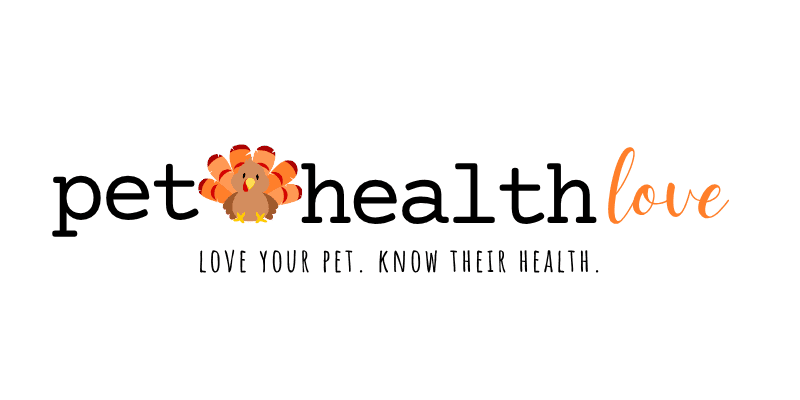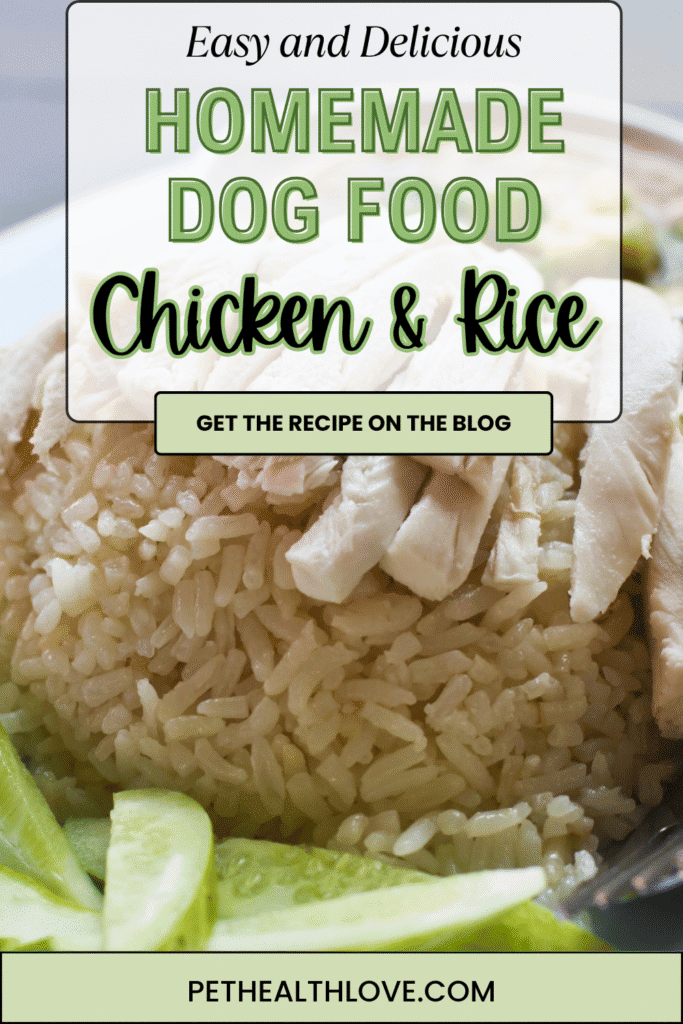Last updated on August 9th, 2025 at 07:22 pm
When your dog has an upset stomach, it’s hard not to worry.
Whether they’ve had a bout of diarrhea, thrown up their breakfast, or just seem off, knowing what to feed them (and what not to) can feel overwhelming.
As a veterinarian, I’ve helped hundreds of dogs recover from tummy troubles—and one of the first things I recommend for mild GI upset is a homemade bland diet. It’s simple, gentle, and easy to make at home. More importantly, it gives your dog’s digestive system a break while you monitor how they’re doing.
In this post, I’ll walk you through exactly what a bland diet for dogs is, how to prepare it, how much to feed, and when to skip the DIY route and call your vet instead. You’ll also find a free printable recipe inside my Resource Library, created with both pet parents and animal nutrition in mind.
What Is A Bland Diet For Dogs?
A bland diet for dogs is kind of like chicken soup for the soul—but for your pup’s stomach. It’s made up of simple, gentle foods that are easy to digest and unlikely to make GI upset worse.
When your dog isn’t feeling well—maybe they’ve had some vomiting, diarrhea, or just seem off—a bland diet acts like a reset button for their digestive system. It gives their gut a break while still providing the nutrients they need to start feeling better.
Why Feed a Bland Diet?
The main reason to feed a bland diet is to help your dog feel more comfortable while their GI tract settles down. If your dog has an upset stomach, bland meals can:
- Soothe inflammation
- Firm up loose stool
- Reduce nausea
- Give their system time to heal
And because bland diets are easy to digest, they’re much less likely to trigger more vomiting or diarrhea. It’s a safe, short-term option I often recommend when dogs come in with GI symptoms—and it’s something pet parents can do at home with just a couple of ingredients.
How Is a Bland Diet Different from Regular Dog Food?
Unlike your dog’s usual meals, which might include a mix of proteins, grains, veggies, and added flavors, a bland diet is stripped down on purpose. It’s just the basics—plain boiled chicken, white rice, or other easy-to-digest ingredients—with no seasonings, fats, or extras.
Think of it like this: your dog’s regular food is a balanced dinner, while a bland diet is more like toast and tea when you’ve got a stomach bug. Both have their place—but only one is gentle enough for a queasy belly.

What Goes Into a Bland Diet for Dogs?
A bland diet keeps things simple—but not all “plain” foods are created equal. Here’s what I recommend including when your dog needs a gentle reset:
Lean Proteins
Choose proteins that are easy to digest and low in fat:
- Boiled chicken breast (no skin or bones)
- Lean ground turkey, drained
- Plain white fish like tilapia or cod, fully cooked
- Scrambled egg (cooked with no butter or oil)
These give your dog the protein they need without overwhelming their stomach.
Gentle Carbohydrates
Carbs help firm up stool and give your dog energy:
- White rice (the most common go-to)
- Boiled white or sweet potatoes (no skins)
- Plain cooked oatmeal (well-cooked so it’s soft and soupy)
Stick with one carb source at a time so you can easily tell how your dog is tolerating it.
Optional Add-Ins for Gut Support
Sometimes I’ll recommend adding:
- A spoonful of plain canned pumpkin (not pie filling) for fiber
- A vet-recommended probiotic like FortiFlora or Proviable
You can use a tiny bit of plain, unsweetened yogurt or low-fat cottage cheese—but only if your dog tolerates dairy well. (Some dogs don’t!)
It’s best to keep things plain for the first day or two to see how your dog is tolerating the diet.
What Ingredients To Avoid
Rich & Fatty Foods
These can irritate your dog’s stomach further. Examples include pork, beef and anything fried or cooked in oil.
Spices & Seasonings
Do not add spices or seasonings, which can caus digestive upset.
Most Dairy Products
Except for a bit of plain yogurt, dairy can be hard to digest.
Anything Irritating
Avoid ingredients like onions, garlic, or grapes that are toxic to dogs.
Tips On Preparing & Serving Bland Diet Meals
Ensure all ingredients are fully cooked to avoid bacterial contamination.
Remove excess fat from meat to make it easier to digest.
Provide smaller portions more often to avoid overwhelming your dog’s gut.
How Much Bland Diet to Feed Your Dog
One of the biggest questions I get is: “How much bland food should I give my dog when they’re sick?” The answer depends on their size—but it’s just as important to watch how they respond to it.
Here’s a simple guide to help you portion it out:
Portion Size by Weight:
- Small Dogs (up to 20 lbs): 1-1.5 cups daily (4-5 meals)
- Medium Dogs (20-50 lbs): 2-3 cups daily (3-4 meals)
- Large Dogs (over 50 lbs): 3-4.5 cups daily (2-3 meals)
Tips for Feeding Success
Start small. Give 1–2 tablespoons per 10 lbs every few hours at first to test tolerance.
Split it up. Smaller, more frequent meals (4–6 per day) are easier on the digestive system.
Watch closely. If your dog seems hungry and is doing well, you can gradually increase the amount. If they seem bloated or uncomfortable, scale it back.
Allergy alert. Some dogs may not tolerate chicken or rice. In that case, switch to alternatives like turkey, sweet potato, or white fish—and always loop in your vet.
Reminder: These are general guidelines. If your dog turns out to be allergic to chicken or other ingredients in the diet, switch it up with alternative protein sources or add-ons. Your vet may adjust portions based on your dog’s age, weight, activity level, or medical history. Always follow their advice first.
No Time To Cook?
Below is a list of canned prescription diets that are bland and easily digestible for your pup:
Royal Canin Veterinary Diet Gastrointestinal
Hill’s Prescription Diet i/d (regular formula and low-fat)
Purina Pro Plan EN Gastroenteric Formula
Transitioning Your Dog Back to Regular Food
Once your dog’s stomach has settled and their poop is back to normal for at least 24 hours, it’s time to slowly reintroduce their regular food. Here’s how to make that switch without upsetting their system all over again:
Step-by-Step Transition Plan
- Start the Blend. On Day 1, mix 25% of their regular food with 75% bland food.
- Increase Gradually. Over the next 3–5 days, slowly increase the amount of regular food while decreasing the bland diet:
- Day 2: 50%/50%
- Day 3: 75% regular / 25% bland
- Day 4–5: 100% regular food
- Day 2: 50%/50%
- Watch for Symptoms. If your dog starts vomiting or has diarrhea again, pause the transition and go back to bland meals for a day. Then check in with your vet.
💡 Vet Tip – Some dogs bounce back in just a couple of days, while others may need up to a week on a bland diet. Go at your dog’s pace, and always check with your vet if you’re unsure.
Keeping An Eye On Your Pup’s Progress
As your dog eats the bland diet, keep a close eye on how they’re responding. Reduced vomiting is a great sign that things are starting to calm down.
Firmer stools mean the digestive system is getting back on track, and a renewed interest in food shows your pup is feeling better. If your dog is also more energetic and playful, that’s another positive step.
In most cases, you’ll start noticing improvement within 24–48 hours if a bland diet is going to help.
When It’s Time to Call the Vet
Bland diets can do wonders, but they’re not a fix for everything. If your dog’s symptoms aren’t improving—or seem to be getting worse—don’t wait it out.
📞 Call your vet if:
- Vomiting or diarrhea continues beyond 2–3 days
- There’s blood in your dog’s vomit or stool
- Your pup seems lethargic, weak, or dehydrated
- They show signs of pain (whining, shaking, guarding the belly)
- They refuse to eat or drink for more than 24 hours
Grab My Vet-Approved Bland Diet Recipe for Dogs
Need help getting started? I’ve got you.
I put together a simple homemade bland diet recipe that’s perfect for dogs with upset stomachs. It’s the same chicken-and-rice combo I recommend in clinic – nourishing, and easy to make with ingredients you probably already have at home.
Ready to download?? Subscribe to my blog and get a FREE bland diet for dogs recipe—perfect for pups with upset stomachs. You’ll also get instant access to my exclusive resource library filled with printable pet care checklists, trackers, and more! 🐾
Final Thoughts on Bland Diets for Dogs
A bland diet can be a gentle and effective way to help your dog feel better when their stomach is upset. I’ve recommended it to countless patients over the years—and used it for my own dog, too. Just keep in mind that bland diets are meant to be a short-term solution.
They aren’t nutritionally complete for long-term feeding, so once your dog is feeling better, you’ll want to gradually transition them back to their regular food. Always talk to your veterinarian before starting a bland diet, especially if your dog’s symptoms are severe or not improving. And if you’re ever unsure?
Don’t guess—reach out. That’s what we’re here for.











Leave feedback about this